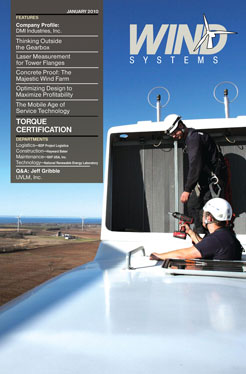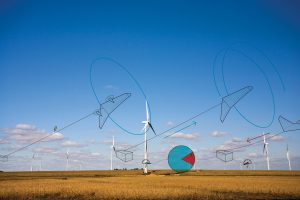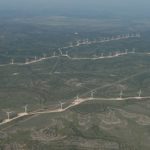Although wind power is the fastest-growing energy source, in many instances the skills required to move components to the project site have not kept pace. Wind power components are not your typical shipments, after all. If you are responsible for the construction of a wind farm, you want delivery of all components to be made on time and on budget, as well as eliminating downtime due to equipment shortages. And as the manufacturer you want your product to arrive quickly, intact, and fully functional, with the shortest effective hold times on inventory in order to improve your cash flow.
Transportation now accounts for at least 25 percent of the wind power supply chain. At the same time logistics is becoming more challenging as the size of the equipment grows, especially the blades, thereby increasing project expenses. Then there are supply chain constraints caused by general equipment availability and transport capacity, especially in the United States. In 2010 equipment shortage is expected to be one of the most critical challenges for the wind power industry. There will not be sufficient equipment dedicated to wind power to erect all the planned windmills—and not only in the United States, but worldwide.
Project moves vary both in terms of complexity as well as the challenges they present. The last leg, resulting in delivery to the job site, is often the most critical. When shipments enter congested ports they are exposed to double handling, poorly coordinated transportation to the job site, and infrastructure issues such as roads that are not completed, or even paved. This means that every step, from the manufacturing point to final delivery, can be a major logistical issue. That also means that the challenges facing logistics managers can be daunting. So what do you do?
Wind farm developers have had three options when sourcing the movement and erection of their wind farm equipment: work with the manufacturer, which may charge more for the move; outsource to an EPC contractor that generally sources from different places; or go to a number of resources and handle it piecemeal. When BDP Project Logistics analyzed the wind power market, we often observed a lack of coordination within the supply chain, especially concerning transportation. Frequently, there was not a single point for coordination or monitoring.
Looking at the wide range of specialized services required to move components and equipment, and the rising costs of project logistics, a practical option for many developers is to work with an outside, non-manufacturer resource. The benefits of working with a project logistics management company can be many. They include having a resource that can get the equipment you need when you need it; minimize shipping and inventory costs; and monitor performance to ensure that project milestones, budget, construction quality, and specific performance parameters are met. Ideally this company provides consultation, coordination, project and cost planning, and end-to-end accountability—one that focuses on solutions, in other words.
This resource should handle all interfaces involved in moving an entire wind farm from production plant to jobsite within a fixed schedule, managing the sea, air, and inland stages, avoiding detentions and double handling at ports and, if necessary, moving the shipments to an intermediate storage location. An independent, non asset-based resource is not interested in drawing out the process or providing equipment that is not needed, and the more global the project logistics company, the wider the capabilities and sourcing options. In-country staff or partners can neutralize local language barriers, take the guesswork out of meeting customs and other governmental regulations, and also cut any red tape that may be encountered. As some projects are in remote areas, unique technical skills are often required. In addition, the latest technology is required on some projects, as well as equipment that is tailor-made for a particular project.
While still somewhat unique, a limited number of project management companies have civil engineering experience. Such a resource can offer road surveys and consult on infrastructure issues, providing preliminary road infrastructure and building bridges, roads, and foundations if necessary. As the wind industry continues to expand, logistics professionals are evolving to match that growth.

































